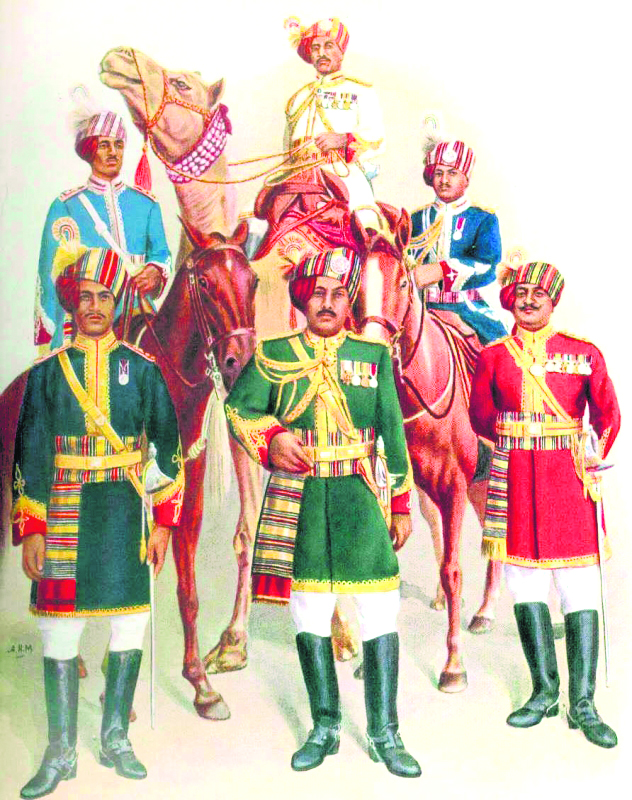Costuming and fashion have always had an emotional connection with my life. Especially the vintage designs that belong to the era of the Raj and post-independence India of the sixties and seventies— like the florals from France in the finest chiffons, imported for the Maharanis by the leading textile ateliers of Europe.

 Princess Brijeshwari Kumari of Bhavnagar
Princess Brijeshwari Kumari of Bhavnagar Maharani Radhika Raje of Baroda
Maharani Radhika Raje of Baroda

Indeed, this is one fashion that cultured families from Punjab and Rajputs had in common. Their love for floral chiffons— just like the ones our mothers wore, printed by Indian mills on Chamundi chiffon, which at that time was, regarded the finest— was unmatched. I recall how my mother, a graduate from Lady Shri Ram, the batch of 1961 would drape her chiffon, fold it carefully and conserve it forever. How all her silk Banarsi borders would find their way to these saris as her bid to conserve.
It’s in this context that I felt a rush of nostalgia down my spine when I read the erudite Yuvrani of Dhenkanal, Meenal Singh Deo’s post on Facebook reminiscing of swatches that she saw first at her ancestral home: The Wankaner Palace. She posted, “A Penchant for Chiffons! Chiffon is a French word meaning cloth or rag. Tradition of Indian Royalty and style identity. Silk chiffons were available in Europe since the 1700s. Very expensive, signifying status. In 1958 nylon chiffon was invented, polyester and nylon made it more affordable and accessible to many more. Indira Raje, Princess of Baroda, later, Maharani of Cooch Behar is believed to have been one of the first to convert the six yards of fabric into high fashion Sarees. She customized her sarees in mills set up in Lyon, France.
These swatches were my favorite pass time as a child! I treasure them till date! They had come to Wankaner Palace from Paris at the time of my aunt’s marriage to choose for their trousseau. There were bright shades on one side and pastels in the same print ,on the other side. Each numbered by hand. A shade card too. These swatches were very expensive and often circulated to other Royal families as was requested by the ‘Parisian Pure Silk French Chiffon’ companies in their letter accompanying the sample swatches. A saree in those days cost about 30 -40 Rupees!”
Florals indeed are embedded in Princely culture and it never ceases to amaze how a royal woman, whether from Vijaynagram or Kashmir wears her chiffons through sultry summer or chilly winters. A velvet cape, an embroidered pashmina, or a rare Toosh added to the look in winter to keep her warm. While there are many brands run by the nobility that creates chiffons, the recent birth of www.thesilkstory.com, based in Kolkatta and founded by a family of noble lineage has taken the Yuvranis and Maharanis by storm. Besides making its way to the wardrobes of fashionistas residing in the various Indian metropolises.
Created from the finest chiffons, 100% pure, these florals bring back the Raj era with total aplomb. Digitally printed they recreate the aura of chintz, the mystique of French floral. Recreated in a true blue vintage color palette, each flower emulates the brush strokes of European masters who could create magic with the Indian rose, the Himalayan hydrangea, the pristine jasmine and the vibrant lavender.
Easy in fall and rich in design, these sarees, along with the few tone-on-tone organzas they create, relive the sheer glamor immortalized by Maharanis of yore by their equally beautiful descendants.













